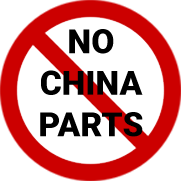The Landing Flare and Other Phases of the Landing Approach
The landing procedure for aircraft is complex, requiring pilots to undertake a number of flight maneuvers before they can shut-off the engines and finalize an operation. The landing procedure consists of multiple steps, and pilots have created terms for each phase starting from the landing approach to the final runway rollout. In order to carry out a successful and “perfect” landing, a pilot must achieve a soft touch down while traveling only slightly above stall speed, all while maintaining a nose-up attitude. To meet these requirements, pilots must be fully aware of each landing phase and how to properly execute it.
The aircraft landing process consists of four steps, those of which are the final approach, the roundout or flare, the touchdown, and the landing rollout. Despite being different flight maneuvers, all phases are linked and must be carried out accurately in succession or the process will have to be repeated again. When attempting the final approach, the pilot should maintain stability throughout the procedure. As the aircraft nears its landing destination, the pilot can then ensure that all flaps are set correctly for their current speed and that the aircraft is trimmed for such a velocity. Depending on preference, pilots may utilize painted numbers on the runway, the runway threshold, or runway touchdown zone markings to maintain a stabilized manner while approaching the aim point. Once passing the aim point, the aircraft should then have its power reduced to idle while the nose is brought up to the landing altitude. By referencing the runway, pilots can gauge whether or not they are aligned correctly.
The following step is the landing flare or roundout, and it should be easy to carry out if the final approach was conducted at an optimal speed. If the approach was taken above the target velocity, the aircraft will balloon back into the air upon attempting to carry out the roundout. If the aircraft was moving too slow on the other hand, then the plane may settle quickly during the procedure. As such, it is paramount that the pilot approaches the roundout at the correct speed as well as times the process just right. While the nose is brought up during the flare, the airspeed should begin to gradually bleed off while the nose is raising. Additionally, the stall speed that the aircraft is traveling at will allow it to begin its descent.
Conducting the landing flare properly is important as it will ensure that enough energy and airspeed is dumped from the aircraft so that it can efficiently roll to a stop on the runway with minimal distance. It is crucial that the flare is not attempted while at high speeds as it may risk the chance of passing the landing zone or running out of runway. The flare can often be the most difficult aspect of the landing procedure, and it can be hard to master when learning how to fly as it combines the knowledge of low airspeed handling, local wind effects, and other factors which all must be considered during the process.
With the complexity of the landing procedure, pilots require lengthy hands-on experience that further guarantees that they will be ready to tackle anything that comes about. Landing requires intense focus and analysis from the pilot, thus they cannot rely solely on formulaic answers and knowledge obtained through education. Instead, new pilots should practice landings ad nauseum until their skills have been sufficiently refined. Whenever a stabilized approach is not achieved, pilots should always do a go-around so that they may attempt the process again.
While a well-trained pilot is very advantageous for efficient and safe flight operations, so too is having a well-maintained aircraft. Parts Needed Yesterday is an online distributor of aircraft parts that are new, used, and obsolete, and we are your sourcing solution for all your operational requirements. If you are facing a time constraint or AOG situation, we offer customers same-day shipping and delivery for a number of items that we carry. To receive a competitive quote for your comparisons, take advantage of our provided RFQ services and a dedicated account manager will be in touch within 15 minutes of reviewing your request. Get started today and see why customers rely on Parts Needed Yesterday for all their operational needs!



